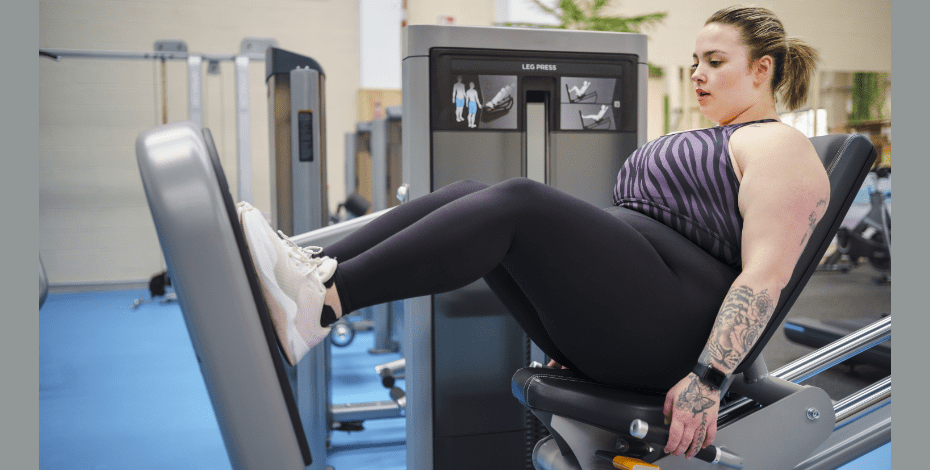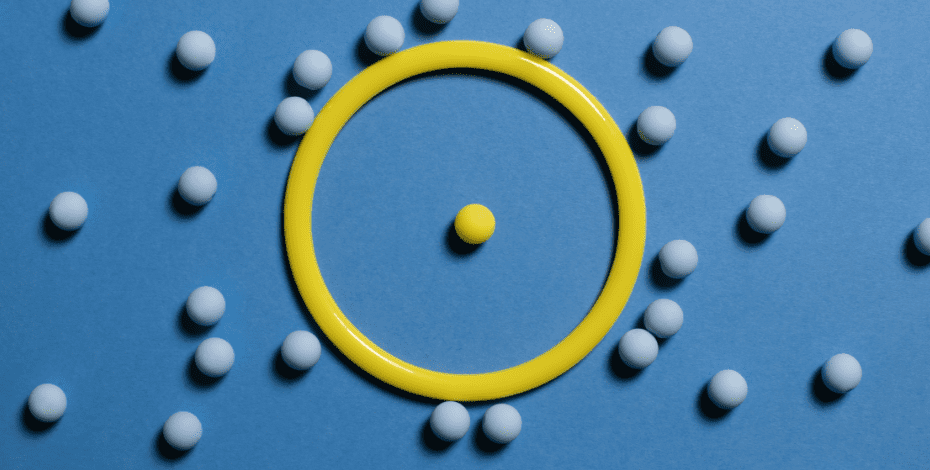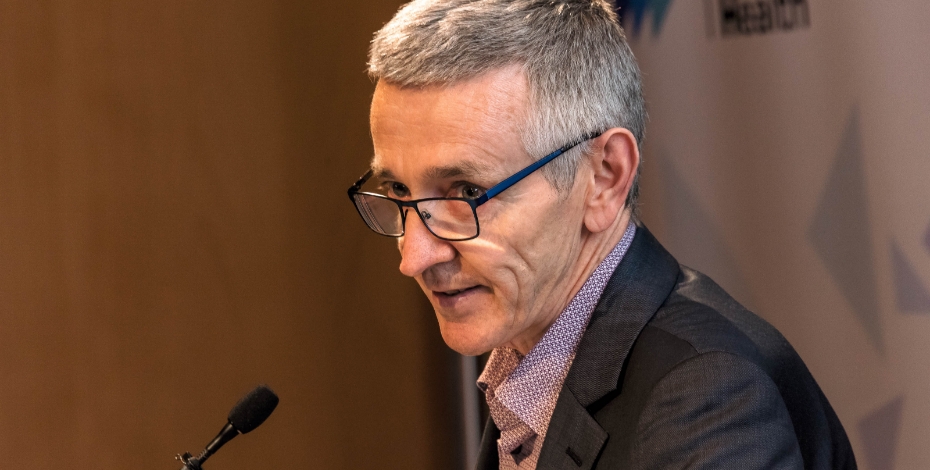
High praise for physio stalwarts

In a testament to their remarkable contributions to the profession, physiotherapists Professor Chris Maher and Peter Duras have been recognised in this year’s Order of Australia recipients list. Through unwavering dedication and pioneering work in their respective fields of research and sports physiotherapy, Chris and Peter have worked to positively impact countless lives. Each discusses the highlights of their careers and what the honour means.
Professor Chris Maher FACP is recognised internationally for his clinical research in low back pain.
In physiotherapy circles, Chris is considered a stalwart of the profession, a leader in his field and a health researcher of significant professional standing.
Yet few outside of the profession recognise that for Chris, physiotherapy came first.
‘A lot of people that I interact with don’t realise I’m a physio because I work at a medical research institute.
'I do drug trials, all that sort of thing. So people often say, “Oh, you’re a physio? Okay,”’ Chris says.
‘So to be recognised for an AM as a physiotherapist is something I’m really pleased about.’
That recognition came recently when Chris was named among recipients of this year’s Order of Australia Awards.
On Australia Day, Chris was appointed as a Member of the Order of Australia (AM) for significant service to physiotherapy as a researcher, clinician and mentor, particularly in the field of pain management.
That reference to his service to the profession was, for Chris, as big a thrill as receiving the honour itself.
Chris is the director of the Institute for Musculoskeletal Health, leading a program of research focusing on the management of musculoskeletal conditions in primary care and community settings.
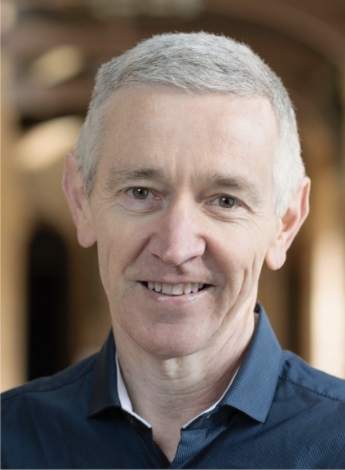
Chris Maher has been recognised for significant service to physiotherapy as a researcher, clinician and mentor.
He is also a Professor in the Sydney Medical School and he holds a National Health and Medical Research Council Level 3 Investigator Fellowship.
He is a Fellow of the Australian College of Physiotherapists by Original Contribution (as awarded by the Australian College of Physiotherapists in 2012), he holds two doctorates including a PhD, he was the recipient of the Royal Prince Alfred Hospital Foundation Research Medal and Prize in 2023 and he also received the Giles Medal for Research Excellence in 2019.
Having achieved so much during his own career, Chris gets a thrill from vicariously watching his PhD students and postdoctoral fellows achieve goals and milestones in their careers.
‘I quite like hearing what they achieve professionally but I am equally pleased to hear family news.
'Two of my PhD students were husband and wife who had twins during their PhD and it is lovely to be sent photos of the twins on their first day going to school.
‘It is also exciting when you see people you have supervised publish in a big journal and share in that excitement.
'For example, one of the PhD students I supervised, Sweekriti Sharma, recently published a paper in the British Medical Journal.
'She is from Nepal and she is now an author in the BMJ, which must be incredible—I think there would be very few people from Nepal who published in the BMJ.
‘You can also be proud of your work peers when they achieve wonderful things. For example, Professor Cathie Sherrington got a NSW Premier’s Prize for science earlier this year,’ Chris says.
‘I’ve worked with Cathie for years and so I was incredibly pleased to see that happen as she is a wonderful scientist and also a physiotherapist.’
A highlight of Chris’s career was the huge media interest in the PACE trial, which evaluated the effects of paracetamol on back pain.
Finding out that an article about the trial made the front page of The Times (London) was a particular thrill, Chris says.
‘Paracetamol was universally endorsed as the first-choice painkiller for back pain but until PACE, no one had done the trial to check that this presumption was true.
'PACE showed that paracetamol was no more effective than a placebo,’ he says.
Although he misses working clinically as a physiotherapist, Chris says he made the move into research because at the time there wasn’t a career structure for physios in clinical care.
‘I wish that we had the system back then that we’re now moving towards, which is recognising physios as clinical specialists and giving them the sort of opportunities that medical doctors have had for generations,’ Chris says.
‘If you’re a great clinician, you can help a number of people. If you train a good bunch of physios, they can help even more people.
'But with research, the potential reach of what you do is enormous.’
Chris says he is grateful to those who took the time to nominate him for the Order of Australia and the recognition at this level, of the work being done in the physiotherapy profession by a range of people, is of vital importance.
‘All awards have somebody in the background doing the nominating and we need to thank those anonymous people who take the time out to write references for people to get promotions, to get jobs, to get awards and all those other things.
'I’d like to encourage people to think about doing that for others; if they know somebody who is outstanding, they should nominate them for an award.
'It might be a local hospital award; it could be an Order of Australia, if they think someone’s appropriate for those types of awards; please put pen to paper.’
Recognition for contribution to sports physio and the community
When Betty Cuthbert, an 18-year-old sprinter from Sydney, stunned the crowds by winning the 100-metre and 200-metre sprint races at the 1956 Olympics in Melbourne, a young Peter Duras was at the MCG cheering her on.
Thanks to his father securing tickets to many of the Olympic events, Peter was enthralled by the sporting extravaganza and bristling with excitement while watching the world’s best athletes compete for supremacy.
It was to become the start of a deep passion for sport that is still celebrated by Peter today.
‘The 1956 Olympics were the turning point for me. I was fascinated.
'I saw Vladimir Kuts and Dawn Fraser win their gold medals. That has hooked me into athletics and the Olympics ever since,’ Peter says.
‘I went to state championships as a 13-year-old and I used to keep records and so on even then.’
Sporting memorabilia adorns the Southbank home in Melbourne that Peter shares with his physiotherapist wife Sue.
The avid collector and self-described ‘sports tragic’ has rows of Olympic torches, medals and autographs in his home.
As a member of the International Society of Olympic Historians, Peter maintains a keen interest in Olympic history and memorabilia.
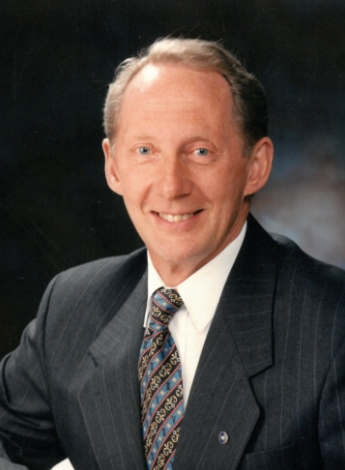
Peter Duras has been recognised for his services to sports physiotherapy and to the community.
And, as a sports physiotherapist who worked with elite athletes for three decades before retiring in 2006, Peter also has a lot of fond sporting memories of his own.
In what he described as ‘one of the greatest nights of my life’, as the volunteer physiotherapist at the 2000 Sydney Olympics, Peter watched trackside as Cathy Freeman ran the race of her career to win gold in the 400-metre sprint.
Recently the spotlight was turned on Peter when he was appointed a Member of the Order of Australia (AM) for his significant service to sports physiotherapy and to the community.
Announced on Australia Day this year, the Order of Australia honour is one that Peter credits to a team rather than himself.
‘It’s recognition of a lot of work but it’s also recognition of all the support I’ve had from my wife Sue, who’s backed me all the way, and from a lot of good Rotarians and a lot of good physios with whom I’ve worked over the years.
'So I see it as a team recognition,’ Peter says.
A retired APA Sports and Exercise Physiotherapist, Peter has spent much of his career in team and collaborative environments, working alongside Sue in their private practice as well as with elite athletes and sporting teams across as many as 15 different sports.
He was selected as a physiotherapist to six Australian Commonwealth Games teams and four World Athletic Championship Australian teams. Prior to that he served as physiotherapist for the Footscray (now Western Bulldogs) and Essendon AFL clubs through the 1970s.
One of Peter’s many career highlights has been his central role in forming the APA Victorian and national Sports and Exercise groups.
At a time when sports physiotherapy was slowly emerging, his initial attempts to form the group were labelled a ‘trivial pursuit’. There’s no such thing, he was told. ‘It’s just orthopaedics in a hurry.’
‘Once we got permission to form the group, we went from four to 500 members in no time at all.
'We immediately started putting on a lecture every month and we wrote a basic introductory course for sports physio, which is still run.
'We also played a role in APA PR, using the popular media image of sports physiotherapists,’ Peter says.
‘Little was happening at a national level, so the Victorian group took the lead. A steering committee was formed, a logo designed and a basic set of professional development standards set out.
'In 1980 the national group was formed, starting with a Victorian executive.’
Peter’s Order of Australia award also acknowledged his contribution to the community, largely through his membership of the Rotary Clubs of Essendon and Central Melbourne for over 50 years as well as his volunteer work with Melbourne’s Asylum Seeker Resource Centre, his work helping the city’s homeless and his role as a volunteer guide with the Australian Sports Museum.
‘When I retired I went to the Asylum Seeker Resource Centre and worked as a voluntary physio there for a number of years.
'I also took a leading role in major renovations they did because I’m fairly handy from a building and maintenance point of view.
'We did a $2 million renovation for $500,000,’ Peter says.
For the next generation of physiotherapists, Peter has this advice.
‘I often remind young people who seek a career in physio that it’s not all about sport. It’s about a much wider range of services.
'Aged care, cardio, thoracic, paediatric and so many other areas can be challenging but they offer so many opportunities and such great rewards.’
© Copyright 2024 by Australian Physiotherapy Association. All rights reserved.


